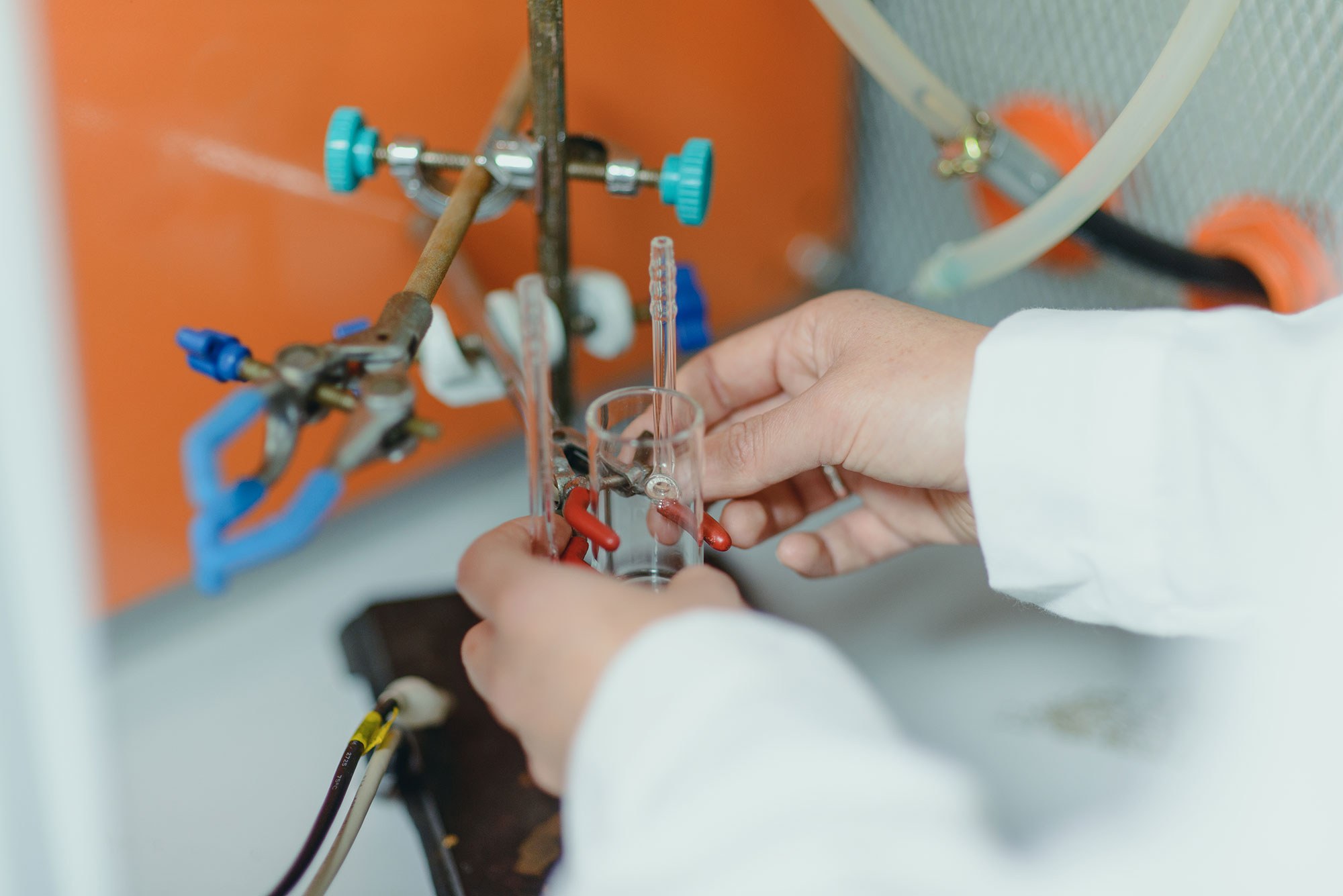Jessop, I. A., Chong, A., Graffo, L., Camarada, M. B., Espinoza, C., Angel, F. A., Saldías, c., Tundidor-Camba, A. & Terraza, C. A. (2020). Synthesis and characterization of a 2, 3-dialkoxynaphthalene-based conjugated copolymer via direct arylation polymerization (DAP) for organic electronics. Polymers, 12(6), 1377. https://doi.org/10.3390/polym12061377
Abstract: Poly[(5,5’-(2,3-bis(2-ethylhexyloxy)naphthalene-1,4-diyl)bis(thiophene-2,2′-diyl))-alt-(2,1,3-benzothiadiazole-4,7-diyl)] (PEHONDTBT) was synthesized for the first time and through direct arylation polymerization (DAP) for use as p-donor material in organic solar cells. Optimized reaction protocol leads to a donor-acceptor conjugated polymer in good yield, with less structural defects than its analog obtained from Suzuki polycondensation, and with similar or even higher molecular weight than other previously reported polymers based on the 2,3-dialkoxynaphthalene monomer. The batch-to-batch repeatability of the optimized DAP conditions for the synthesis of PEHONDTBT was proved, showing the robustness of the synthetic strategy. The structure of PEHONDTBT was corroborated by NMR, exhibiting good solubility in common organic solvents, good film-forming ability, and thermal stability. PEHONDTBT film presented an absorption band centered at 498 nm, a band gap of 2.15 eV, and HOMO and LUMO energy levels of −5.31 eV and −3.17 eV, respectively. Theoretical calculations were performed to understand the regioselectivity in the synthesis of PEHONDTBT and to rationalize its optoelectronic properties. Bilayer heterojunction organic photovoltaic devices with PEHONDTBT as the donor layer were fabricated to test their photovoltaic performance, affording low power-conversion efficiency in the preliminary studies.


